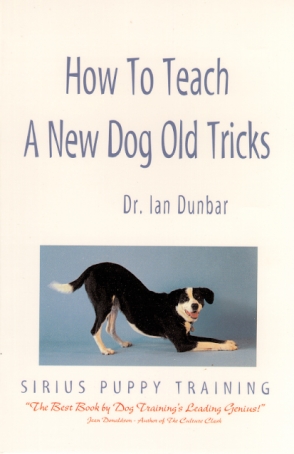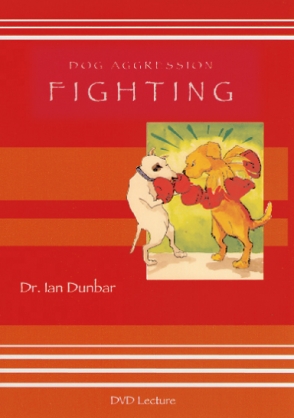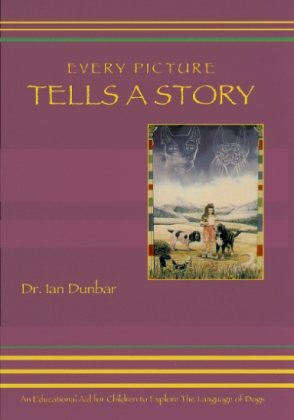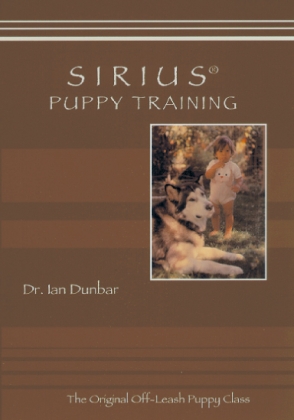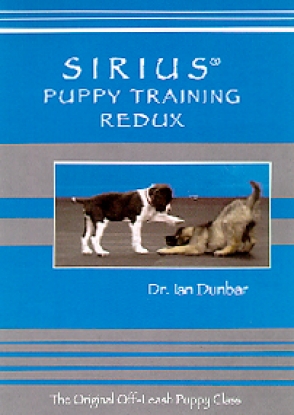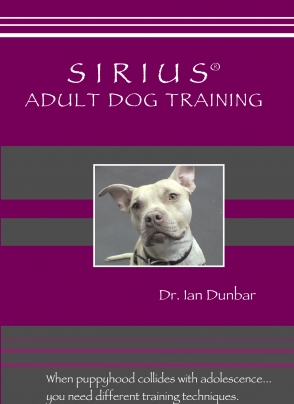Voted the #1 BEST BOOK by the Association of Pet Dog Trainers. Easy, fun-loving, dog-friendly methods for teaching a new puppy old tricks (such as basic manners), or for teaching an older dog (or older owner) who is new to training.
Sirius Introduces Me to the Dog's Point of View
In 1971, I moved to the US to research dog sexual behavior at UC Berkeley. This might sound like a strange choice (the research topic not the place) but at the time, I was a veterinarian with an intense interest in both animal behavior and obstetrics and my two favorite domestic species were cows and dogs. A coin toss came down in favor of dogs and so, dog sexual behavior was a logical research choice. Berkeley was not necessary a hotbed of canine sexual activity but rather, the site for the longest running study on dog behavior.
Our research focused on investigating the development of sex-based differences, including aggression, social and sexual relationships, and olfactory communication. Preference Tests were a useful tool for analyzing olfactory communication. We presented dogs with a choice of stimuli and observed whether they consistently acted differently towards one or the other.
For example, when given the choice of visiting two females — one in estrous and one not, male dogs would prefer to visit the estrous female. Similarly, male dogs would spend a much longer time sniffing urine from an estrous female than anestrous urine. Now of course, this is hardly world-shattering science. As my grandfather said, “Could have told you that fifty years ago.” All dog owners know, that male dogs go batty sniffing all types of urine, especially estrous urine.
The purpose of our studies though was to objectively quantify dog behavior to prove statistical significance and provide a baseline for future studies, which not surprisingly, yielded some pretty interesting discoveries. We found that the endocrinology of sexual behavior for both male and female dogs was quite unique from that of other mammals. For example, castrating males of most mammalian species curtails reproductive urge and ability. However, we found that castrated male dogs maintained their strong preference for female rather than male company and that they still very much preferred estrous urine to anestrous urine. Moreover, not only did the urge to sniff and court and mate remain following castration, so did the ability.
For me though, there was a more profound discovery. In a sense, I discovered, what it meant to be dog.
Watching male dogs discover, sniff, lick and savor estrous urine, with the precise palate of a sommelier and the occasional appreciative clacquement des dents, I was utterly intrigued. A thought occurred to me, Could I tell the difference? Could I detect a female dog’s estrous state by the smell of her urine.
In a double blind test, I found that my nose was on par with a dog’s, at least in this task.. It was easy to distinguish estrous from anestrous urine. Anestrous urine is highly concentrated (yellow) and has the familiar pungent smell of dog urine, whereas fresh estrous urine is extremely diluted (clear) and just smells like lukewarm water. So, I asked myself, What’s the big deal? I simply couldn’t comprehend a male dog’s total fascination for estrous urine. Obviously I was missing something here. Surely lukewarm water was not something to go brain-dead bonkers over.
At the time, I was reading a book called Sirius by Olaf Stapledon. The book describes the life of a Welsh sheepdog that had the brainpower and speech capabilities of a human, but the senses and urges of a dog. Sirius could describe his feelings and sensations to the reader. As soon as I read Sirius’ description of his doggy girlfriend, Morwen, I got it. Immediately I understood. Dogs and humans live in an identical physical world yet we perceive it so utterly differently. Our brains are different, sensory input is different, behavioral output is different, and we have such different viewpoints.
Sirius changed my entire perspective about dog behavior and from that day on, I have been utterly fascinated by trying to understand the dog’s point of view.
Preference Testing offers us a way to ask dogs questions. For example: What is your favorite food? Would you rather sleep on the couch or the bed? Would you rather play with a Kong or a Squirrel Dude? Which route would you rather take at the crossroad? Which family members do you like best? Which dogs are your best friends, or your worst enemies? And how do you interpret what we are trying to teach you? Do you learn quicker if we pretend we are alpha wolves, or your mother? Or, would you rather we respect you as dogs and use our human brains to teach you English as a Second Language (ESL)? All fascinating questions that help improve the relationship we have with our dogs.
"Of course it’s mostly the luscious smell of her. I can’t possibly make you understand the power of it, because you humans are so bad at smells. It’s as though your noses are not merely feeble but color blind. But think of all that your poets have ever said about the delectable curves and colors of the beloved, and how her appearance seems to express a lovely spirit (often deceptively), and then imagine the whole thing done in terms of fragrance. Morwen’s fragrance when she wants me is like the scent of the morning, with a maddening tang in it for which there are no words. It is the scent of a very gentle and fragrant spirit."
From Sirius by Olaf Stapledon

